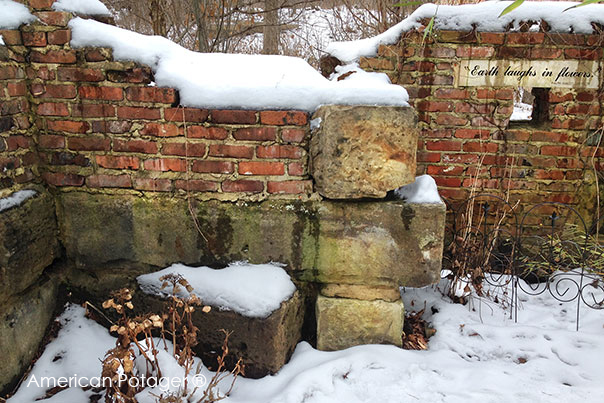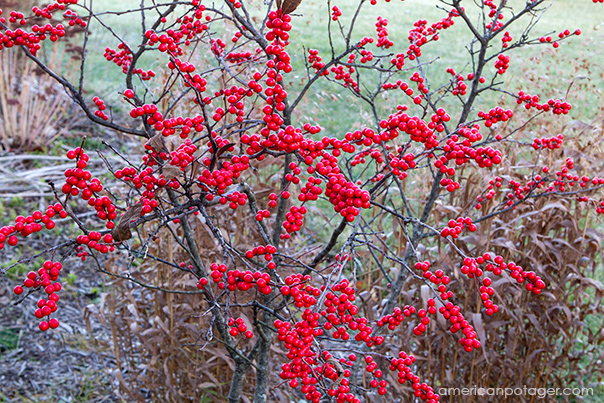Sure, if you live in California, Texas or Florida winter gloom is no big deal for you. You can run outside and pick fresh lemons from your own lemon tree this time of year. The rest of us have to grow citrus indoors to harvest our own. The smell of fresh lemons actually boosts our mood. Truly. Laura is enjoying some Lemony Pie made with Meyer lemons.
Winter
Faux Follies and Fake Ruins
I am creating a secret garden for a client that needs a wall. I want something that stops the eye as you stroll down the path- something to prevent you from seeing the whole view at once. Often, as any good landscape architect would, I use plants to create mystery and define spaces. Plants are walls. A well placed tree or shrub will conceal or reveal a view allowing it to unfold as you walk through a garden. But this garden needs an actual wall, wall- or part of one. More accurately, for the story my client and I are creating, this private garden needs the overgrown, dilapidated remnant of a stone or brick wall like the sham ruins built for wealthy landowners in England and Western Europe during the 18th century.
Many families in the 1700s owned authentic antiquities and remains from earlier times on their estates. Even if your medieval building was intact it became popular to knock part of it down to give a more romantic feel, like picturesque painting. It was no fashion crisis if you didn’t own an actual Abbey foundation, stone arch or Roman column, you could hire a professional to build one for you. Everywhere the English Landscape School blossomed faux ruins were all the rage. The monuments were carefully placed in the landscape to provide a focal point and entertainment for strolling estate owners and their guests. These ruins became known as follies.
A shining example is the gothic castle ruin on the Wimpole Estate in Cambridgeshire now owned by the National Trust. Wimpole’s Folly was built in 1768 by architect James Essex and landscape gardener Capability Brown from drawings and sketches developed by the prolific builder of faux ruins, Sanderson Miller. This new (at the time) ruin was made to look like a remnant from the middle ages, 500 years earlier.
Here in central Ohio we have our own faux ruin. MKSK won an Honor award from The Ohio Chapter of the American Society of Landscape Architects for excellence in design of the Sister’s Garden at Inniswood Metro Gardens. This 2.8 acre children’s garden is “designed to celebrate the complexity of nature and the inquisitiveness of childhood.” The landscape architects were so successful in creating an illusion you might be fooled into thinking the walled garden is an actual homestead abandoned and reclaimed by nature.
I spent one glorious winter afternoon studying the fake farmhouse for inspiration in designing my client’s fake garden wall. It’s a tricky thing; just like the sham ruins of the 18th century it’s got to fit in the landscape and look like it’s been there for millennia.
Winter Color in the Garden
Once upon a time the fashionable winter garden was a boring line of evergreen spheres. We were afraid of brown and tan and golden flax. We were afraid to see a plant at rest or at the end of its lifecycle. Deciduous hollies (ilex verticillata), limelight hydrangeas (hydrangea paniculata ‘Limelight’), and switch grass (panicum virgatum ‘Dallas Blues’) are some of my favorite plants for texture, movement and color in the winter garden. You can still plant evergreens, but just a few.


